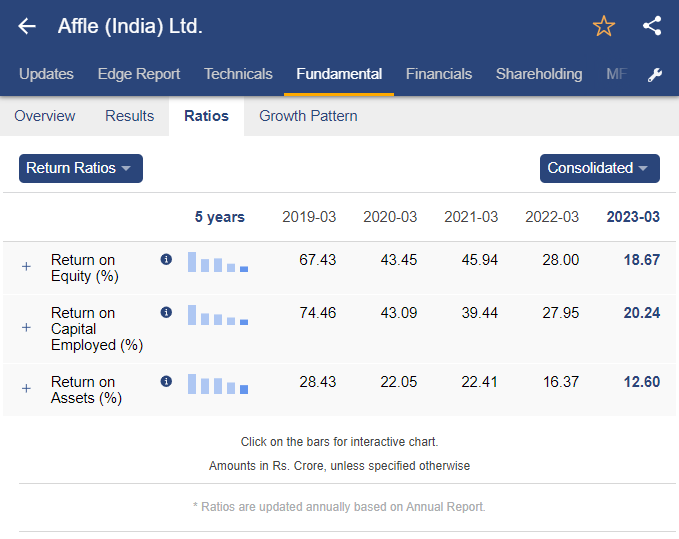20 Top Pieces Of Advice For Deciding On AI Stock Analysing Websites
20 Top Pieces Of Advice For Deciding On AI Stock Analysing Websites
Blog Article
Top 10 Tips To Customize Ai Trading Platforms For Your Strategy
Strategy customization is a crucial characteristic of AI platform for predicting and analyzing stocks that allow users to tailor the platform to their own specific goals in trading and risk tolerance as well as market conditions. Platforms that offer powerful customization options can boost your trading efficiency. Here are 10 top strategies for evaluating the customizable options offered by these platforms.
1. Evaluate Pre-Built Strategy Templates
A variety of templates. Find out if the platform has a wide selection of built-in strategies that are suitable for different trading types (e.g. swing trading, day trading, or long-term investment).
You are able to easily modify the templates and tailor them to meet your particular needs.
Performance history: Determine whether you have access to historical information about the performance of strategies that you have already built.
2. Assess Customized Strategy Creation
Drag-and-drop tools: Look for platforms that offer intuitive drag-and-drop interfaces to design custom strategies.
Coding options: Check whether the platform supports custom code (e.g., Python, R, or proprietary scripting languages) for advanced users.
Flexibility - Make sure that the platform you select permits you to set rules for entry and exit, parameters to manage risk, as well as other essential components of your strategic plan.
3. Check for Backtesting Capabilities
Historical data. Check if the platform can provide enough historical data in order to test your strategy back.
Customizable settings: Be sure that you are able to change parameters during backtesting.
Performance metrics - Make sure to see if your software provides detailed performance indicators (e.g. the win rate, Sharpe coefficient, or drawdown) for all strategies that have been backtested.
4. Evaluate Real-Time Strategy Testing
Paper trading: Check that the platform provides the option of paper trading as well as simulation mode for testing strategies in real-time without placing your money at risk.
Live testing is a great way to check whether your plan can be implemented in the real world market using small amounts.
Real-time Adjustments: Test if you're able to adjust your settings in real time, based upon the market conditions.
5. Assess Integration with Technological Indicators
Indicator library - See whether a platform offers a comprehensive collection of technical indicators, like moving averages (e.g. RSI), MACD or RSI.
Custom indicators: Ensure that you have the ability to create or import custom indicators to incorporate into your strategies.
Combination of indicators Look to see if the platform allows combining multiple indicators to support complicated strategies.
6. Check for Risk Management Tools
Stop-loss/take-profit: Ensure the platform allows you to set stop-loss and take-profit levels within your strategies.
Position sizing. Find out if you are able to establish rules for the size of positions (e.g. percentage or a set amount) and control the risk.
Risk-reward ratio: Determine whether the platform allows setting risk-reward ratios for specific trades or strategies.
7. Evaluate Multi-Asset Strategy Support
Asset classes: Check that the platform can support strategies in multiple asset categories (e.g. stocks, ETFs or options and forex).
Cross-asset strategy: Check whether you can make strategies that encompass multiple asset classes (e.g. pairs trading or Hedging).
Market coverage. Check if the platform covers the markets that you are interested in (e.g. US international, cryptocurrencies).
8. Review Automation & Execution
Automated Trading: Make sure whether the platform is able to execute strategies automatically that are based on predefined rules.
Types of orders: Check to see if the system allows for different order types (e.g. limit or market) when executing a strategy.
Latency - Verify the platform's capability to perform trades promptly, especially when employing high-frequency strategies.
9. Take a look at the Strategy Optimization Tools
Optimization of parameters: Ensure that the platform has tools for optimizing strategy parameters (e.g. grid search, genetic algorithm).
Machine learning Integration: Determine whether a platform is able to integrate machine learning to optimize and refine the strategy.
Scenario Analysis: Determine whether the platform can test strategies across different market scenarios (e.g. bull, bear or volatile).
10. Review Community Feedback and User Feedback
User feedback: Conduct user research to evaluate the effectiveness of the platform in customizing the strategy.
Community forums: Check whether you can locate forums where members discuss and share their custom strategies.
Support resources: Ensure that the platform has tutorials, webinars, or documents that will help users develop and improve their strategies.
Bonus Tips
Free trial period: You are able to explore the options for customization of the platform using a the demo or trial.
Scalability: Make sure the platform you choose to use can manage complex strategies that change as you trade.
Customer support: Find out if you can get help in relation to strategy-related issues or questions.
Use these guidelines to evaluate the AI platforms' stock prediction and analysis ability to customize strategies. By doing so you can ensure you select a platform which is compatible with your objectives for trading and allows you develop and improve your personal strategies. A platform that offers powerful customization options will allow you to change your strategy to meet changing market circumstances and improve your results. View the recommended ai trading for blog recommendations including stock analysis app, ai trading software, best ai for stock trading, stock analysis app, free ai investing app, ai trading tools, best ai stocks to invest in, ai trader, chart ai for trading, ai trading bots and more.
Top 10 Ways To Evaluate The Transparency Of Ai Stock Trading Platforms
Transparency is a crucial aspect to consider when considering AI trading and stock prediction platforms. It guarantees that the users can trust the operations of the platform and comprehend the way in which decisions are made and verify the accuracy of the predictions. Here are 10 tips to assess the transparency of these platforms:
1. AI Models explained in depth
Tips: Ensure that the platform is clear about the AI models and algorithms used to predict.
The reason is that understanding the basic technologies can help users determine its credibility.
2. Data sources that are disclosed
Tip: Evaluate whether the platform discloses the sources of its data (e.g. historical stock information, news, social media, etc.).
What's the reason? Knowing the data sources ensures the platform has reliable and complete information.
3. Performance Metrics, Backtesting and Results
Tip - Look for transparent reporting regarding the performance metrics, such as accuracy rate, ROI and backtesting.
The reason: Users can test the effectiveness of an application by examining the past performance of it.
4. Real-time notifications and updates
Tip. Make sure the platform is able to provide live notifications or updates regarding system and trade changes, as well as predictions.
Why: Real-time visibility ensures that users are always alert to critical actions.
5. Limitations The Communication is open
Tip Check that the platform outlines its limitations and risks with regard to trading strategies and forecasts.
Why? Acknowledging limitations builds trust and allows users to make educated decisions.
6. Raw Data is accessible to users
Tip : Assess whether users are able to access raw data and intermediate results that are used by AI models.
The reason: Users can conduct their own analysis with raw data, and then confirm their findings.
7. Transparency in the charges and fees
Make sure you read the terms and conditions of the platform you're thinking of using.
Transparent Pricing: It creates trust by preventing the unexpected cost of.
8. Regular reporting and audits
Check if your platform is regularly inspected by third parties, or you can find reports about its performance.
Why independent verification is important: It increases credibility and accountability.
9. Predictions that can be explained
TIP: Check whether the platform is able to explain how it makes specific predictions or suggestions (e.g. decision trees, importance of features).
Why: Explainability can help you understand AI-driven decisions.
10. Customer Feedback and User Support Channels
Tip: Check whether the platform offers open channels to receive feedback from users as well as provide support. Also, you should determine if it addresses user concerns in a transparent manner.
Why: Responsive communication demonstrates the commitment to transparency as well as customer satisfaction.
Bonus Tip: Regulatory Compliance
Check that the platform is in compliance and is transparent about its compliance with financial regulations. This will improve transparency and trustworthiness.
Make informed choices by taking a look at all these elements. Have a look at the recommended view website on chart ai for trading for blog recommendations including ai investment stock, ai stock trading, incite ai, best ai stocks to invest in, ai bot for copyright trading, chart ai trading, incite ai, ai stock, ai bots for trading, stock analysis websites and more.